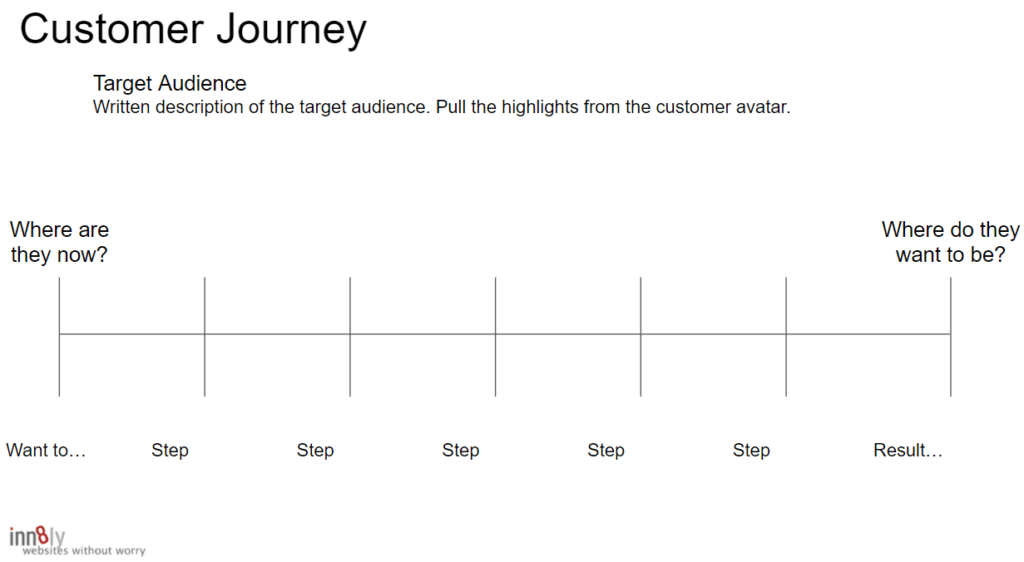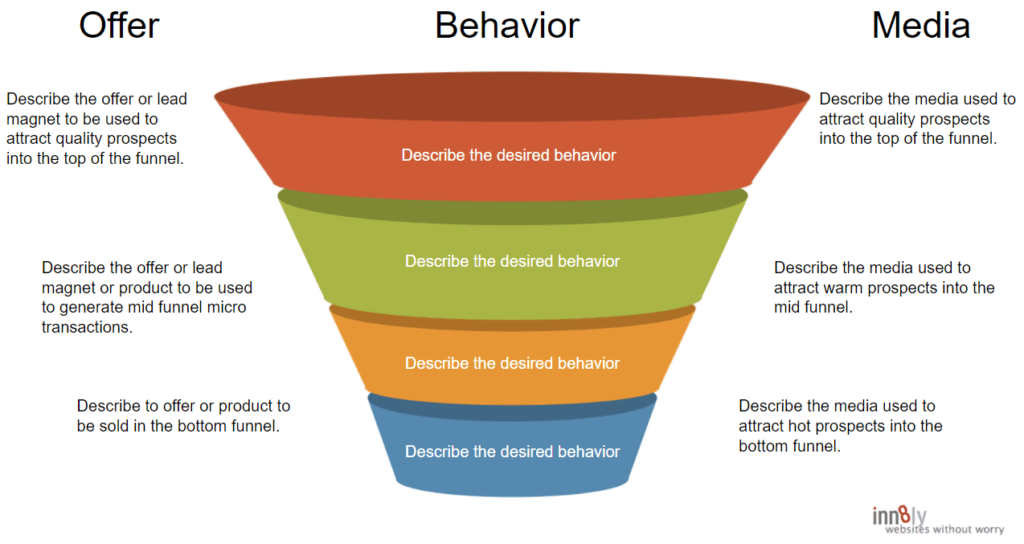Every business leader knows that going into a marketing campaign with a plan will result in less expensive and more efficient marketing. Even if you already know that having a marketing plan is crucial, you may question how to create one.
Successful marketing starts and ends with your customers. An in-depth understanding of your customers and their ever-changing needs is crucial during the planning process. When describing your best customers, you’ll want to keep the ‘four-pillar avatar’ in mind: demographics, characteristics, pain, and gain.
This article will discuss the importance of planning for your small business. We’ll show you how to develop a simple, efficient marketing plan in three steps, taking into account your customers’ avatars, journeys, and behaviors. Let’s begin!
Why You Need a Marketing Plan

A well-thought-out marketing plan can make a huge difference – not only to your bottom line but to the amount of time you’ll need to dedicate to your marketing efforts. Without a focused strategy, you may spend too much on experimenting with different ad placements, content strategies, and platforms. By developing a plan, on the other hand, you will be able to bypass a lot of this guesswork.
When you have a clear picture of your customer, their avatar and their journey, you can formulate an effective and efficient marketing plan. Understanding the buyers’ journey lets you uncover key touchpoints where you can guide your leads toward your solution. The avatar helps you understand the tone and content of the messaging you use at each touchpoint.
Developing a plan is an essential part of ensuring that you maximize your time and marketing dollars. Ultimately, it should enable you to meet your best customers where they are, appeal to their needs, and provide a frictionless path to conversion.
How to Develop an Efficient Marketing Plan to Ensure Company Success (In 3 Steps)
Now that we’ve covered how having a plan benefits you and your customers and covered, at a high level, the customer avatar and journey, let’s look at how to develop a solid marketing plan in three steps.

Step 1: Create Your Customer Avatar
Knowing who they are is the first step in successfully marketing to your customers. One of the best ways to do this is by building an avatar that represents your target audience(s). Doing so can help you better appeal to them through content marketing, email marketing, or any other channels you employ.

When building your customer avatar, it’s essential to distinguish between your ‘customers’ and your ‘best customers.’ To put it mathematically, only 20 percent of your customers are ‘best customers.’ However, that 20 percent will account for about 80 percent of your business. Not only do they buy from you, but they’ll likely share their positive experiences with others, potentially bringing in new customers.
You’ll want to be sure that your marketing efforts are especially appealing to that crucial minority. A customer avatar can help you understand how to do that. As you can see in the above image, there are four quadrants you’ll want to focus on when you create your customer avatar:
- Demographics: Your customer’s age, race, ethnicity, gender, marital status, income, employment, and other demographic information, as well as physical traits.
- Characteristics: This includes your customer’s attitudes and personality.
- Pain: This is the problem your customer needs to be solved.
- Gain: This quadrant shows how your solution solves their problem and benefits your customer.
As you build your customer avatar, it’s important to spend time thinking about each of the four quadrants. You can take advantage of any relevant data you might have to help you with the demographics quadrant. A marketing tracking system can make it easier to narrow down which social media platforms they’re most active on. Then you can use those networks to get a feel for your customers’ characteristics.
A solid understanding of the first two quadrants helps you know where to find your prospects and how to speak to them. The Pain and Qain quadrants highlight how you’ll assist your customers and provide value to them. Once you’re armed with this information, you’ll be ready to start building the customer journey.
Step 2: Document the Customer Journey
You can think of the customer journey as a roadmap. It shows where your customer is right now and where they want to be. Your marketing efforts should help them get from point A to point B.

Every customer experience with your brand is part of their journey. The map documents each of the touchpoints a potential lead encounters as they become more familiar with your company. It also describes the questions they will have and the obstacles that must be overcome.
It’s important to understand that the customer journey isn’t always linear. One prospect may begin closer to the end than another, and some may skip steps altogether.
With the information from your customer avatar handy, consider how this person is likely to find your website. Perhaps they looked for it after reading recommendations in a Facebook group or found it by asking Google.
Once a potential customer lands on your site, you’ll want to take stock of the interactions they’re likely to have there. This is the perfect time to assess your website and ensure that the experience is frictionless. Consider the problems and questions they have. Use the website to support their journey. Don’t shout at them about your solution.
For example, you can take note of how easy it is to find the information they need or reach out for additional help. You can map out the purchase process as well. Choosing payment and shipping options, adding a product to a cart, and creating an account are all part of the customer journey.
Also, don’t neglect post-purchase behavior. Transactional emails, including confirmation and shipping emails, are a great place to communicate with customers. Tell them about ongoing customer support and the returns process.
It’s vital to keep the satisfaction of your prospects at the forefront of your mind. Once you’ve fleshed out your customer journey, you can use it to build a marketing funnel to guide your prospects further.
Step 3: Establish Your Marketing Funnel
With the information you’ve gathered so far, it’s time to build your marketing funnel. Typically, marketing funnels consist of digital ads, a landing page, a Call to Action (CTA), and possibly other tactics. The purpose of the funnel is to guide potential customers to a sale or other conversion.
The most effective marketing funnels are based on three pillars: Traffic, Relationship, and Value – or TRV. As prospects move through their buyer’s journey, they should be moving deeper into the marketing funnel. Each step presents an opportunity for you to demonstrate your company’s value to the potential customer:

At the top of the funnel is awareness. During this stage, the customer is aware of their problem, and you’ll want to make them aware of your business. The funnel is particularly wide at the top, and many of the people who enter may never become your customers. Those whose problems you can solve are more likely to move further down the funnel.
Since you’ve built a customer avatar, you already understand who your best customer is, their problem, and the benefits that they expect to gain from solving it. At this point, you’ll want to be sure that your interactions clearly communicate what your business does best. You can try targeting ads based on your avatar to bring these customers to your website.
The next major step is mid-funnel marketing. You want to capture the prospect’s interest and build know, like and trust. If you’ve used the knowledge gained from your customer journey, prospects landing on your site will know that they’re in the right place. You might capitalize on this by serving them more useful content.
You can try activating a desire to bring customers further through the funnel. You can accomplish this by demonstrating why your business is the best option for meeting their needs. Remember to let your customer avatar assist you in choosing tools for this step. If your best customers skew young and trendy, you may want an endorsement from an influencer. You might use a whitepaper or case study for prospects who value facts. Or useful tools like infographics, checklists, and templates can also be effective.
Finally, as we move to the end of the funnel, the remaining leads will hopefully convert and become customers. Again, you can look to your customer journey to be sure the purchase process is seamless. You might also provide your new customers with a way to share their positive experiences and bring other prospects into your marketing funnel.
How to write an efficient digital marketing plan in three steps. #smallbusinessmarketing #digitalmarketing #marketingplan Share on XBuilding an Efficient Marketing Plan – Conclusion
You’ll be amazed at how much more efficient your marketing can be when you have a plan of action in place. Taking the time to strategize and prepare can mean the difference between success and failure, especially for a small business.
In this post, we discussed the three steps to follow to develop a solid marketing plan:
- Create your customer avatar.
- Document the customer journey.
- Build your marketing funnel.
Are you ready to produce your foolproof marketing plan? We’d love to hear about your strategies, so feel free to contact us!
Profitable Google Ads – 7 Steps to a Revenue Faucet
Learn how profitable Google Ads Search campaigns are possible and likely if marketers are patient and make data-driven adjustments.
Want to Increase Marketing Effectiveness?
Maximize marketing ROI with performance tracking.
Unlock the Power of Email Marketing for Your Business
This power and importance of email marketing to your business success.
Author: James Hipkin
Since 2010, James Hipkin has built his clients’ businesses with digital marketing. Today, James is passionate about websites and helping the rest of us understand online marketing. His customers value his jargon-free, common-sense approach. “James explains the ins and outs of digital marketing in ways that make sense.”
Use this link to book a meeting time with James.

